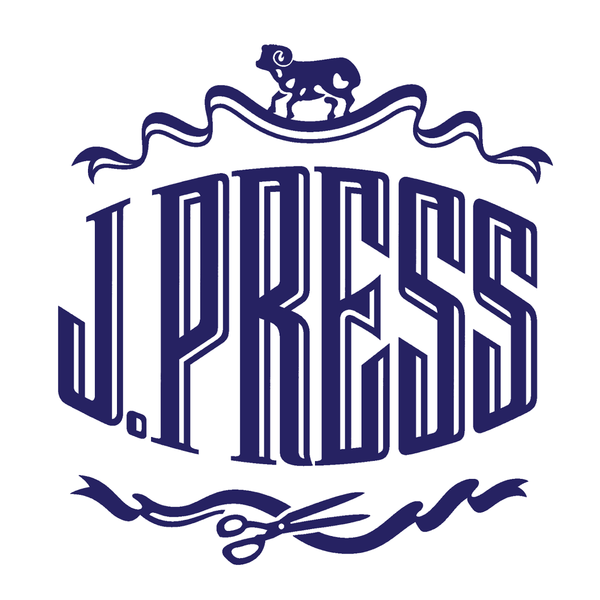Thought it time to refurbish a former column and chapter from my book Threading the Needle describing the 80-year anniversary of the 1944 New Haven Christmas Parade on York Street that I spent with my grandfather, the eponymous Jacobi Press.
During World War II, Yale professors still wore tweeds, but the boys they taught would soon graduate into khakis. Behind Woolsey Hall are the many rows of names of the boys who never returned.
My grandfather’s sons left J. Press to serve Uncle Sam for the duration. My dad, Paul Press, was a riveter at the Winchester Repeating Arms Co. factory on Dixwell Avenue that manufactured firearms including the M1 Garand rifle, M1 and M2 carbines. His brother, Irving, ran the PX (Post Exchange) store at Camp Ritchie, Maryland. Camp Ritchie was a military training facility in Maryland where soldiers, particularly a large group of Jewish refugees from Nazi Germany known as “the Ritchie Boys,” were trained in intelligence gathering and analysis. Grandpa Press performed his civilian duties overseeing the multitude of custom-tailored uniform orders for candidates at the Officer’s Training Schools at Yale. J. Press was on a wartime footing along with the rest of America. The Princeton store closed shortly after the Declaration of War as the entire staff was drafted into service coincidentally completing their military basic training at Fort Dix nearby Old Nassau.
I was six years old in 1944 when Grandfather Jacobi set up chairs and blankets for us to watch the Christmas Day Parade on the balcony in front of his second-floor office at the J. Press store. Viewing the wartime spectacle from the balcony offered a key spot to view brigades of Sherman tanks and armored vehicles clanking their treads to the war bond rally on the New Haven Green.
Soldiers, Sailors, and Marines blared their bugles and beat the drums in military cadence to “As The Caissons Go Rolling Along.” At back end of the parade on top of a Ford truck bauble and beaded in Christmas hoopla, was All-American Yale Football Captain Paul Walker, the Dink Stover and Frank Merriwell of his time. He was appropriately festooned in a Santa Claus suit and beard as he pointed a Winston Churchill “V for Victory” clinched finger salute directly to me on the balcony.
Stiffly at attention, I returned Captain Walker’s salute as the parade and the Grand Old Flag passed me by proudly attired the military uniform my grandfather tailored for me as if I were one of his customers at Yale Officers Training School.
The Winds Of War On York Street
RICHARD PRESS


7 comments
Thank you for this wonderful reminiscence.
It may be of interest that both Air Force and Navy ROTC returned to Yale in 2012, largely through the support of Dean Joe Gordon, and the programs are thriving. I had the pleasure of teaching AFROTC cadets both on campus and at the Yale Camp at Great Mountain Forest, where Colonel Scott Manning, the first commandant of the returned AFROTC detachment, and I led a land navigation exercise for the cadets, with the help of my friend and colleague Starling Childs II.
In addition to the excellent biography of Norman Holmes Pearson mentioned above, one might include the remarkable history of Yale and other Ivies in the making of the OSS and CIA by Robin Winks, who served as Chair of the Yale History Department and Master of Berkeley College. The book is Cloak and Gown: Scholars in the Secret War 1939-1961. By the way, I can recall that Robin considered Gabe at the York St. store one of the leading sources on what he called the “unwritten history” of Yale, owing to his over sixty years of working at the corner of York St. and Broadway and having had informal access to all that went on at Yale.
But at the risk of being too long-winded, one can get a genuine sense of Norman Holmes Pearson’s character by viewing his portrait that hangs on the Reading Room level of the Beinecke Library, which was painted by Deane Keller, who taught for over forty years in Yale’s Fine Arts Department, and who worked with Pearson in London when Keller served in the Monuments, Fine Arts and Archives Section Unit—the famous “Monuments Men.”
Thanks for the great rembrainces .
Truly unfortunate that post WW2 so very few from Yale have answered the call to military service.
Richard, since you mentioned the Princeton J. Press store and the OSS, “Oh So Social”, my father was a friend of Moe Berg, a prior OSS member and a catcher on the Princeton baseball team and a graduate of Princeton. I had lunch with him and my father in the early 1960’s. He was very quiet, but very smart and he always wore a dark, double breasted suit and white shirt.
I highly recommend the book about him, “The Catcher Was A Spy”, and the movie by the same title.
My dad was an accountant who was drafted in 1942. As his eyesight was bad, they didn’t want him shooting a rifle, so they taught him arc welding and he spent the war in England patching up planes that returned from bombing raids over Nazi Germany. He said you could spot an officer a mile away in his pinks and greens—the pinks being the “light taupe” cavalry twill pants they wore. He would always have a pair for himself. They wore like iron. I still have the pair my mother bought me from Jerry in the NY store for Christmas more than 20 years ago. I wore them to Messiah in Alexander Hall in Princeton just last Saturday. Great stuff. The pair perfectly with one of my Donegal Mist sport coats.